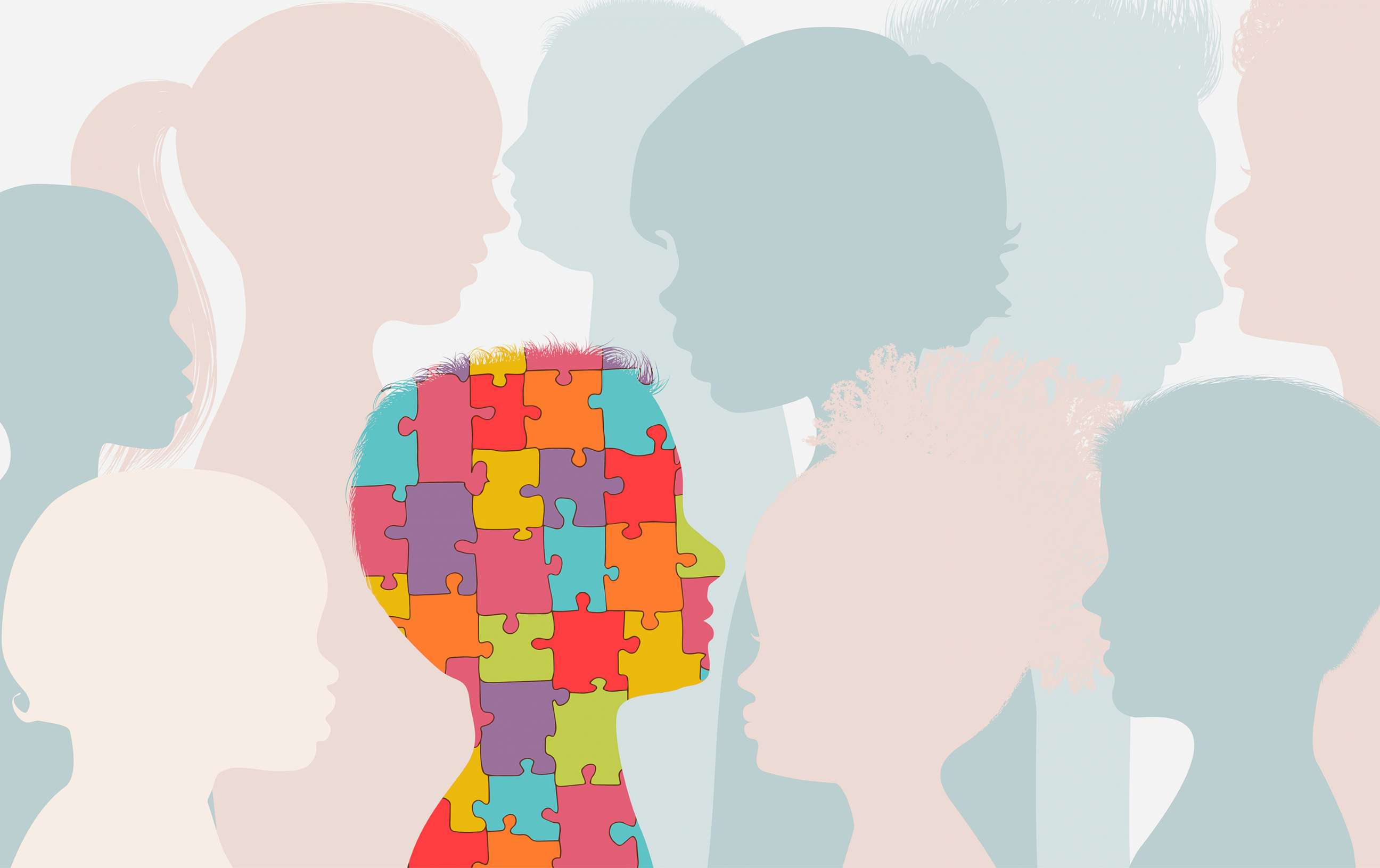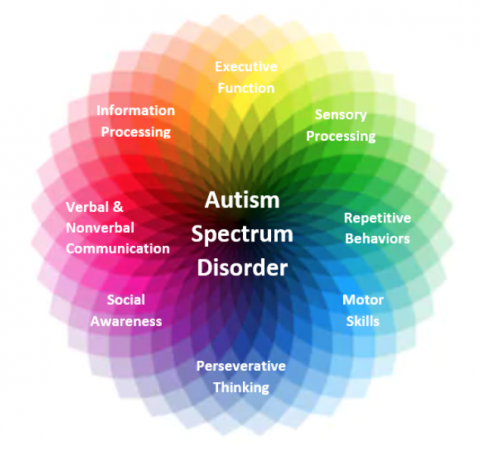The Duty of Education And Learning in Sustaining Pupils with Autism: Best Practices
The Duty of Education And Learning in Sustaining Pupils with Autism: Best Practices
Blog Article
Raising Understanding About Autism: the Importance of Very Early Medical Diagnosis and Intervention
The discourse surrounding autism range disorder (ASD) requires a focused assessment of early medical diagnosis and intervention approaches. Very early intervention not just boosts interaction skills yet also promotes social combination, inevitably boosting the quality of life for affected individuals.
Understanding Autism Spectrum Condition
What specifically is Autism Range Disorder (ASD)? Autism Spectrum Condition is an intricate neurodevelopmental condition identified by a variety of challenges in social interaction, communication, and behavior. It is termed a "spectrum" due to the fact that it encompasses a wide array of signs and symptoms and levels of impairment, which can differ dramatically from one individual to one more. ASD materializes in early youth, with symptoms normally appearing before the age of 3.
The etiology of ASD continues to be multifactorial, including a combination of hereditary and ecological impacts. Study indicates that people with ASD might exhibit atypical neurodevelopment, causing distinctions in brain connection and feature (autism). These variants can affect cognitive procedures and lead to problems in understanding social cues, revealing emotions, and participating in reciprocal communication
In addition, people with ASD may present repeated habits and limited interests, which can additionally contrast with regular developing trajectories. Recognition of the diverse presentations of ASD is important for cultivating a comprehensive culture and promoting reliable assistance approaches. By progressing our understanding of ASD, we can better attend to the needs of those affected and develop treatments that improve their lifestyle.
Very Early Indicators of Autism
Very early recognition of Autism Spectrum Problem (ASD) is crucial, as recognizing the check in young kids can result in prompt treatments that significantly boost outcomes. Parents and caregivers must know numerous very early indications that may suggest a child gets on the range.
One of the most typical early indications is an absence of eye get in touch with. Children with ASD may not respond to their name being called or might reveal minimal rate of interest in social communications. Delayed speech or a lack of spoken communication can likewise be a sign, as some children might not start to speak up until later than their peers or may have difficulty starting conversations.
Repeated actions, such as hand-flapping, shaking, or persistence on similarity, are added indications to consider. A youngster may display uncommon responses to sensory stimulations, such as being overly sensitive to noises or appearances. Moreover, a lack of creative play or trouble in involving with peers can be observed.
Recognizing these very early indications is vital for professionals and moms and dads alike, as it can trigger further examination and, if essential, the advancement of personalized approaches to sustain the youngster's development and development. - autism
Benefits of Early Medical Diagnosis
Timely recognition of Autism Spectrum Disorder (ASD) not only facilitates early treatment yet also opens various advantages that can considerably boost a kid's growth. Among the main benefits of very early diagnosis is the possibility for site tailored assistance, which guarantees that kids receive the specific resources they need to thrive. This individualized strategy can bring about improved social abilities, interaction capabilities, and emotional regulation.
In addition, very early diagnosis permits family members to gain access to therapeutic and academic services faster, producing a structure for lifelong knowing and adjustment. Kids that obtain early treatment are usually better geared up to develop necessary life skills, which can result in better independence as they age.

Reliable Treatment Methods

An additional effective strategy is making use of Social Skills Training (SST), which assists children with ASD learn suitable interactions and create friendships. Including role-playing and video clip modeling can improve these skills in a regulated atmosphere. Furthermore, Very Early Beginning Denver Design (ESDM) integrates developing and behavioral strategies for youngsters aged 12 to 48 months, advertising cognitive and psychological development through play-based activities.
Speech and language treatment is likewise essential for resolving interaction difficulties, making it possible for youngsters to express their demands effectively. Sensory assimilation treatment can aid children take care of sensory level of sensitivities, permitting them autism to engage more fully in their environments. By implementing these targeted intervention caretakers, methods and experts can substantially boost results for youngsters with ASD, guaranteeing they reach their complete capacity.
Structure Encouraging Areas
Creating a supportive community for individuals with Autism Spectrum Problem (ASD) boosts the performance of treatment methods by giving a network of understanding and resources. Such communities foster inclusivity, making it possible for people with ASD to flourish in social, academic, and vocational settings. By promoting understanding and acceptance, these neighborhoods help reduce preconception and empower people to embrace their special identifications.
Encouraging communities can take various types, including regional support system, academic efforts, and advocacy companies. These teams provide important sources such as workshops, informational sessions, and social events that promote links in between caregivers, professionals, and households. By sharing experiences and techniques, area members can gain from each other, enhancing their capability to support people with ASD effectively.
Moreover, partnership between institutions, medical care service providers, and community organizations is crucial in creating an inclusive environment. Training programs for instructors and personnel on autism understanding can considerably improve the educational experience for pupils with ASD. Inevitably, constructing supportive areas not just benefits individuals with autism yet also enriches the entire community, fostering a culture of compassion, respect, and good understanding.
Conclusion
Raising awareness concerning autism and highlighting the significance of early medical diagnosis and treatment can greatly impact people on the range and their families. Timely acknowledgment of early signs assists in access to essential assistance, boosting communication and social skills. Reliable intervention methods foster freedom and improve top quality of life. By growing understanding and lowering preconception within communities, a proactive and helpful atmosphere can be developed, eventually benefiting those affected by Autism Range Problem.
The discourse surrounding autism range problem (ASD) necessitates a focused exam of very early medical diagnosis and intervention techniques. Very early treatment not just improves interaction abilities yet also promotes social assimilation, inevitably boosting the quality of life for damaged people. ASD materializes in very early childhood, with signs normally appearing before the age of three.
Timely identification of Autism Range Problem (ASD) not only assists in early intervention yet also opens numerous advantages that can considerably boost a youngster's growth.Raising recognition concerning autism and stressing the significance of very early diagnosis and treatment can greatly affect individuals this website on the spectrum and their households.
Report this page